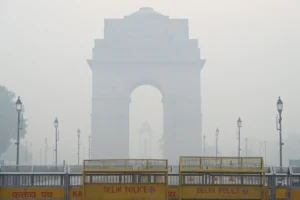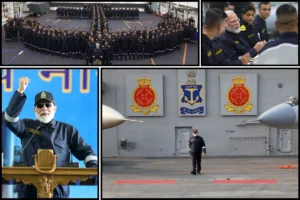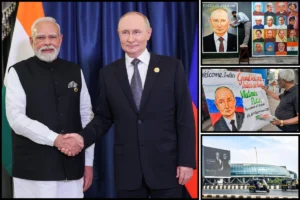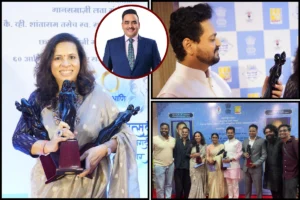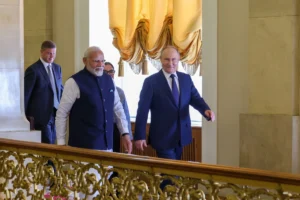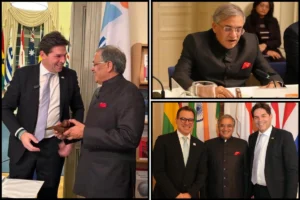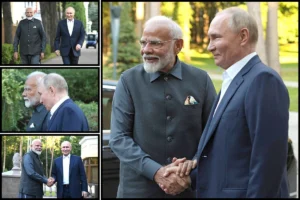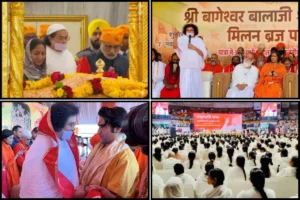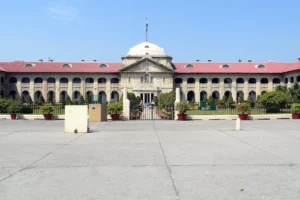
This is in continuation of ‘The Saga of TATAS’, How a family built a business and a nation- The India of today has emerged from the dreams of Jamsetji Nusserwanji Tata sowed in the minds of Indians in his life.
A man like Jamsetji, whose dreams were always bigger than anyone else’s imagination, would have required many lives to see all of his dreams take shape. Bombay (now Mumbai), even in the late nineteenth century was the financial capital or hub of business activities. So Jamsetji returned to Bombay after staying for a couple of years in Nagpur. Jamsetji’s house in Bombay was home to his extended family, including his nephews and a widowed sister. After dinner, he would spend time in his library which had a collection of nearly 2,000 books. He would read on diverse topics, whether gardening or construction. He took care of his family and had allotted shares of his company in the name of each individual. His elder son Dorabji Tata returned to India in 1879, having studied at Kent and then at Cambridge to join his younger brother Ratan Tata at St Xavier’s College to complete his studies at the behest of his grandfather Nusserwanji. It would have been easy for Jamsetji to place him in a senior position at Empress Mills, which was doing very well by then. But he sent him off to join the Bombay Gazette as a cub reporter, where Dorabji spent two years. He was then sent to Puducherry (formerly called Pondicherry), which was known for producing a fine cloth called French Ginny, and later sent to study the production and viability of producing the same in Nagpur. The idea was eventually dropped by Jamsetji when he realised that the project did not seem viable.
India was also waking up to the call of Independence and the Tatas realised that they needed to contribute to the cause. The Empress Mills was doing well and Jamsetji decided to contribute in his own way by building more Indian businesses. For example, Jamsetji bought a sick Dharamsi Mills at Kurla in Bombay in an auction at Rs 12.5 lakh. The mill covered 1.5 lakh square meters and had 1,300 looms with nearly a lakh spindles. It was a herculean task to turn the sick mill around. The machinery was worn out and had to be replaced. Jamsetji decided to buy second-hand machines for the mill. But following the cancellation of a large order from China, he was forced to raise the capital to survive. The bankers refused to help him since the word had spread that the Tatas were in trouble. Jamsetji would not permit the Tata name to be besmirched and sold his personal shares to raise money. He got his best men from Empress Mills to work in Bombay at the new Dharamsi Mills. Later this mill came to be known as Swadeshi Mills, and until recently, held pride of place in the Tata empire. Jamsetji spent his entire time and energy reviving Swadeshi.
Meanwhile, always on the lookout to launch unique projects, Jamsetji was on a visit to France, found that the weather was similar to that of Bangalore ( Now Bengaluru) and Mysore, and brought back a few silkworms to try breeding them in India. Silkworm breeding was an old tradition he wanted to revive. At that time, silkworm breeding used to take place in Moradabad but Jamsetji dissatisfied with its quality and shine, wanted to create the best silk in Mysore Province. Buying large parcels of land in Bangalore and Mysore, he set up the Tata Silk Farm Organisation and encouraged farmers to try silkworm breeding. He also managed to bring down experts from Japan and took care of their hospitality so that they could stay on and provide training to the farmers. Not many people would know that the origin of the famous Bangalore-Mysore silk sarees lies in the silken touch provided by Jamsetji’s efforts and passion.
While in London, Jamsetji had attended a lecture by Thomas Carlyle, who said a nation that understood the value of iron would reap its weight in gold. That point stayed with Jamsetji. Now in his forties, he came across a report by a German geologist talking of immense mineral deposits in the Chanda district in central India. Chanda was close to Nagpur, and the discovery of coal in the Warora area near Nagpur had already been made public. Jamsetji wasted no time in sending mining samples from Warora and the surrounding areas to Germany for testing. Unfortunately, the result suggested it was of an inferior quality with low calorific value. But Jamsetji’s single minded focus on manufacturing steel did not waver. For the next seventeen years, he went around India collecting samples and checking for iron ore. It would be 1899 before he met with success. The Viceroy Lord Curzon who had just taken over that year, had made the rules for mining easier, giving hope to Jamsetji.
Jamsetji now sought an appointment with the Secretary of State Lord George Hamilton, who gave him a patient hearing. Jamsetji told him about his dream, as a youth, of building an iron and steel manufacturing plant in India. Adding that he was now in his sixties and lucky to have been blessed with all that he had, he said he had just one wish: to build a steel plant in his country. Lord George Hamilton was impressed and urged Lord Curzon to provide whatever support Jamsetji needed.
Jamsetji then embarked for America, where he planned to see the big iron and steel plants and decide on the plant and machinery required for his venture. He visited Alabama, Petersburg and Cleveland. He met a famous geologist, Julian Kennedy in Cleveland, who brushed off his idea, saying, ‘you cannot afford me. The feasibility report itself would cost you a lot. I suggest you drop the idea’. However, seeing Jamsetji’s determination to get the plant at any cost, even if it meant to selling all his assets. Julian Kennedy suggested the name of Charles Page Perin, a renowned geologist and metallurgist, Kennedy wanted his acquiescence before he began his study.
Walking straight into Charles Page Perin’s office without knocking, Jamsetji asked, ‘ You are Mr. Perin, aren’t you you? When the latter nodded, he said, ‘ I have found my man then. You must have received Kennedy’s letter. I want to set up a steel plant in India and I need you as my chief advisor. Don’t worry about about the costs. I am prepared for it. I want you to be there with me. Will you come along’. Perin just stared. Here was an old man in his sixties, talking with a confidence that was impressive. He was tempted to refuse but the determination and zeal in Jamsetji’s eyes kept him from saying no. Finally, he agreed much to Jamsetji’s relief.
Perin sent his geologist, C.M.Weld to India. It was 1904 by then. Jamsetji’s older son Dorabji, his nephew Shapurji Saklatwala and Weld got busy in their pursuit of mines in the wild jungles Chanda districts. It was a dangerous mission. Travelling in bullock carts and walking through the jungles, Weld collected samples meticulously for testing. But their test was futile. While the land did show some promise of iron ore, it did not indicate enough quantities to mine. When Weld expressed a desire to quit, Jamsetji pleaded saying that he had arrived just a few months ago, why not stay for some more time? He suggested the team look in other places. Weld could not turn down Jamsetji’s request and stayed on.
Dorabji, in the meanwhile, was travelling the local district office to inform them that they were winding up their project, When he spotted a map of the Geological Survey of India pasted on a notice board. He saw the map marked with dark spots at certain places, indicating iron ore deposits. On closer inspection Dorabji was pleasantly surprised to find that the places marked were merely 225 km from Nagpur and rushed to give Weld and Jamsetji the good news. The places shown on the map were in nearby Durg district. Once there, walking uphill, they could feel their heels hitting iron-rich soil. Their initial inspection proved them right, the soil had over 60 percent iron ore content. But there was no source of water nearby. Water was an important element among the requirements for setting up a steel plant. Their efforts, abandoned then, were not completely wasted. Nearly fifty years later, Durg would become famous for the Bhilai Steel Plant, a Government of India undertaking set up in 1955.
However, fortune favoured the persistent, and Jamsetji soon received a letter from geologist O.N. Bose, who had earlier worked in Durg and was now posted in the princely state of Mayurbhanj in Bengal province. Bose’s letter stated that not only did the state have rich iron ore reserves but that the Maharaja was willing to give favourable terms to anyone who would set up a plant.
Work began in right earnest, It was rough terrain, with wild elephants roaming without a care and jungles populated by Santhal tribes. Once digging began, they struck a solid piece of iron, just a few feet below the soil. The group was overjoyed. The soil had 60 percent iron ore concentration, well over 3.5 crore tonnes of it. Their search for water, a crucial commodity, ended soon when they discovered two large rivers nearby. A railway station, Kalimati, (The station is now known as Tatanagar railway station, and is located in the city of Jamshedpur), was also close at hand. All the elements had come together, Like children finding long lost toys, the group hugged each other in joy!
The birth of India’s steel manufacturing was about to happen.
Jamsetji was so confident of his dream project that he wrote to his son Dorabji, five years before actual production began at the steel plant, asking him to ensure that the roads in the town where the plant would be set up should be wide and laid well. He said that the roads would see a lot of truck and hence needed to be built with care. He asked Dorabji to plant a lot of fast growing trees along the roads and in the villages nearby as the steel plant would generate a lot of heat and the green cover would offer some respite. He even directed him to build football and hockey fields and temples, mosques and churches for the benefit of villagers.
How Haffkine Institute Came Into Existence?
The Haffkine Institute for Training, Research & Testing is a biomedical research institute located in Parel, Mumbai, that is known for its work on snake anti-venom production and infectious disease research, was established in 1899 by Dr. Waldemar Mordechai Haffkine, the inventor of the plague vaccine.
Bombay had been battling the scourge of the dreaded bubonic plague for the three consecutive years, from 1896 to 1899. In 1898 the death toll in the city exceeded 18,000. Of those attacked by the disease, no less than 91 percent succumbed. In 1897, a Russian doctor, Professor Waldemar Haffkine, had introduced inoculation against the bubonic plague, but the stories went around that leprosy and smallpox had resulted from the serum. But Jamsetji, whose knowledge was practically encyclopaedic and who was always ready to devote himself to the thorough study of any current problem, was not be fooled. He did whatever was possible to fight this disease in the interest of the community’s well being. He went through every piece of literature he could find on the subject in order to familiarise himself with the history and treatment of different kinds of plague, and to find the best methods of preventing the spread of infection. He was quick to understand the value of Haffkine’s discovery. Jamsetji underwent immunisation himself and ensured that all his servants did likewise. This was the same Haffkine who was later appointed the director of the Plague Research Laboratory in Bombay, which today goes by the name of the famous the Haffkine Institute for Training, Research & Testing.
Taj Mahal Hotel Constructed By The Personal Fund Of Jamsetji
By the turn of the century, Bombay was growing fast, leading to a divide between the “bada sahibs” or the whites, and the “Chhota sahib”, local gentry. There were just three hotels to cater to visitors. Esplanade Mansion near Kala Ghoda for the brown sahibs and the Great Western Hotel and Apollo Hotel for the white sahibs. The rooms were small and claustrophobia, with mosquitoes adding to the menace.
Thee is an apocryphal story about Jamsetji being refused entry into one of the two hotels meant for whites and how that led him to build a far superior hotel. But one one knows how true the story is. The fact is that Jamsetji wanted to build a world class hotel in Bombay as none of the three existing ones were of that standard. At this time, Bombay was witnessing the construction of some of its most iconic buildings- Victoria Terminus; the building which today houses the BMC’s head office; and the headquarters of the Bombay, Baroda and Central Indian Railway ( BB &CI, which later became the headquarters of Western Railway) which is familiar to us today as Churchgate railway station.
The architectural engineer responsible for for these marvels was F.W. Stevens and he was being helped by two Indians- Raosaheb Sitaram Khanderao and a Parsi gentleman, D.N.Mirza. Jamsetji hired the two Indians for his hotel projects. He had already chosen 2.5 acres of land lying between the Naval Yacht Club and the dockyard at Apollo Bunder, and had signed a ninety-nine year lease. The Gateway of India was yet to be built. Land reclamation was in full swing and Jamsetji was convinced that he had chosen the perfect location for this hotel.
Without any fanfare, following just a simple Pooja, work began on 1st November 1898, Jamsetji had told his family that his personal finances would be used to build the hotel. He would visit the construction site each day, involving himself completely. Digging the foundation to a depth of mote than 40 feet was a difficult task, as it was very close to the sea. But Jamsetji had a vision; each of his room must face the sea, making the guests fell like they were floating on the water itself. He was personally involved in all purchase, whether electrical appliances from Dusseldorf or Chandeliers from Berlin. He ordered washing machines, fans and soda-making machines from America. While iron pillars were shipped from Paris. Jamsetji had seen the impressive Eiffel Tower and was convinced about the longevity of iron pillars from France. Even today, parts of the hotel are supported by these pillars. Jamsetji spent nearly 25 Lakh rupees on the furnishings- all his own funds, as promised. The hotel opened its doors to the public on 16 December 1903, though not yet fully completed.
Also Read: The Saga Of TATAS; How A Family Built A Business & A Nation – Part-1
To read more such news, download Bharat Express news apps








